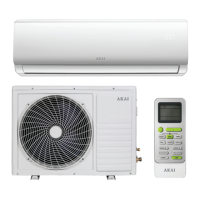15
After Sales Support
1300 886 649 (AUS) 0800 836 761 (NZ) | info@tempo.org
Installation (Cont.)
Connecting the pipes
• Do not remove the cap from the pipe until connecting it, to avoid dampness
or dirt from entering.
• If the pipe is bent or pulled too often,
it will become stiff. Do not bend it
more than three times at one point.
• When extending rolled pipe,
straighten the pipe by unwinding it
gently, as illustrated (Fig. 11).
Connections to the indoor unit
• Remove the indoor unit pipe cap and check that
there is no debris inside.
• Insert the nut and create a flange at the extreme
end of the connection pipe.
• Tighten the connections by using two wrenches
working in opposite directions (Fig. 12).
• For R32 refrigerant, mechanical connectors
should be outdoors.
Water drainage from the indoor unit
The condensed water drainage from the indoor unit is fundamental for the
success of the installation.
• Place the drain hose below the piping,
taking care not to create siphons.
• The drain hose must slant down-
wards to aid drainage (Fig. 13).
• Do not bend the drain hose or leave
it protruding or twisted and do
not put the end of it in water. If an
extension is connected to the drain
hose, ensure that it is lagged when it
passes into the indoor unit.
• If the piping is installed to the right,
the pipes, power cable and drain
hose must be lagged and secured
onto the rear of the unit with a pipe
connection.
1) Insert the pipe connection into the
relative slot.
2) Press to join the pipe connection
to the base.
Fig. 11
Torque
wrench
Fig. 12
Fig. 13

